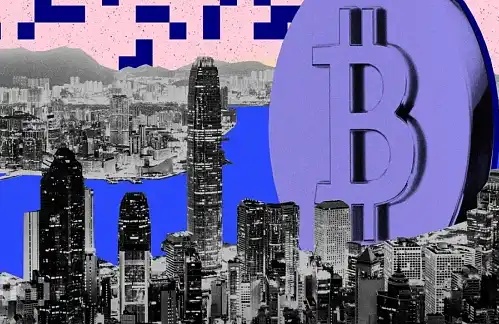What kind of Web3 social network do we need?
Original author: Anthonyx, Co-founder of Port3 Network
Recently, there have been two hot projects in the Web3 social space, one is friend.tech and the other is Tipcoin. Last week, we participated in a Web3 Social-related Twitter Space, where we had lively discussions on various social tracks. I think it is necessary to delve deeper into this topic and see if we can draw some conclusions.
Friend.tech and Tipcoin
Translation:
Friend.tech and Tipcoin
(No translation needed as it contains HTML tags and English words)
Friend.tech (FT) is a Web3 product similar to Only Fans and Knowledge Planet. It is attached to the desktop as an App using the Web App method, without the need for AppStore review. The application is currently in the stage where an invitation code is required to join. After linking to your Twitter account, you need to deposit a certain amount of funds into the Base network to continue the subsequent community joining actions.
The innovation of FT lies in treating the joining and leaving of a community as a share trading action. To join a KOL's community (a one-to-many chat managed by KOL), one needs to purchase Keys. The price of Keys increases as the number of members grows, similar to buying tokens in liquidity pools like Uniswap. This model is inspired by Unibot. People rush to buy Keys due to this wealth effect, and there are even bots searching for the latest Keys to quickly buy and profit from arbitrage.

Friend.tech's Key Trading
Tipcoin is a tipping bot that enables influence mining through spreading on the Twitter platform. Its mining rules are very simple, which is to tag the Tipcoin account and include the $tip keyword when sending a tweet. The Tipcoin bot detects users' tweet behavior and evaluates rewards based on influence factors such as reading, retweeting, and commenting. Different propagation actions correspond to different point rewards. Points are tallied once per epoch, and then mining rewards in $tip tokens are distributed based on ranking and proportion.
It is worth noting that both of these products are built on the Twitter platform. By obtaining users' Twitter identities, social relationships can be constructed and user behavior can be tracked.
In addition, both projects have introduced clever Tokenomics, especially Friend.tech, which has actually turned user joining social into a transactional behavior, creating a certain wealth effect. Tipcoin, on the other hand, adopts a project and token that utilizes Twitter KOL influence to spread itself, to some extent, a Fair Launch.
Problem of Power Shortage
The first problem encountered is the lack of development momentum. Mechanisms like Tipcoin have chips that are basically obtained for free through mining, and the exchange condition is that they help the project gain tremendous influence, crazy forwarding and tagging, making Tipcoin a hot topic. However, such chip distribution lacks long-term motivation for token prices, and no one will be willing to take on such a big plate, so it may eventually develop in the direction of Meme.
friend.tech is a good model that helps KOLs build a paid community and accurately integrates user behavior into transactions. Users engage in crazy speculation, and the platform earns revenue through transactions. Some demand is indeed accumulated here, but the user base is still limited, unless they completely revolutionize social media, which is almost impossible to surpass OnlyFans.
This is exactly the problem with decentralized social networking, often driven by rewards, gradually losing value in the flood of information, and ending in a messy way. It is worth being optimistic that although such failures have been repeated, the new things now are obviously better than before, both in terms of experience and mode.
Web3 social networking is not yet mature
There have been numerous attempts at social networking within Web3, from Steemit to Deso, the short-lived Damus, and now Lens Protocol. However, none of these have truly become a Web3 social product with user stickiness. Why is this?
There are many reasons for this, but the most important one is that in the crypto industry, the economic model is more important than the social application itself. Financing and trading are the real needs on the blockchain, not socializing. Therefore, we see that the utilitarian nature of crypto is obvious, lacking long-termism. Users' enthusiasm is mainly due to mining rewards, and their initial intention for socializing is to obtain rewards. Eventually, they leave because of the lack of rewards. Since users come for mining rewards, the content above is very poor, and ultimately, bad money drives out good money. No one cares whether valuable social interactions occur.
Another reason is that the social product experience of Web3 cannot surpass Web2. Web2 has a huge existing user base and the most mature products, which contain a large amount of user social relationships and social data. Web3 social needs to start from scratch and cannot form economies of scale. Even through grafting, it still increases the threshold and greatly reduces the user group, with more participation from a small number of people in the crypto field.
Many Web3 Social projects have come up with a clever approach, which is to build the incentive layer of Web3 based on Web2 data. Projects like Friend.tech and Tipcoin have indeed gained a lot of momentum in the early days. This has undoubtedly become a consensus, that is, do not directly create a virgin way to build social networks, but should innovate based on existing social infrastructure.
However, this model also has significant drawbacks. Based on the Web2 platform, it is constrained in certain important data aspects. With too many users flooding in, Tipcoin's detection function has malfunctioned, and X platform (Twitter) has begun to collapse Tipcoin-related tweets. It can be said that the foundation they have built is not solid, and once Twitter bans the API Key of projects such as Friend.tech or Tipcoin, users will not be able to use the application normally, and all models will cease to exist.
From this perspective, decentralized social platforms (such as Lens Protocol, NOSTR, Farcaster) have advantages, without having to worry about the censorship of Web2 platforms. This is the direction that should be adhered to in the long term. If you want to build a stable platform, the core must be based on decentralized protocols, rather than relying on centralized platforms.
Overall, social platforms should **be based on existing Web2 platforms for cold start,** but data should be deposited in decentralized protocols. Initially, adapt to user habits through grafting, and then gradually bypass Web2 platforms and directly transfer users to Web3. Ultimately, the goal is to seize a traffic entrance. At the end of the development, there may be a moment of rupture, but before reaching a certain scale, large platforms will not be challenged by small platforms. What needs to be ensured is to successfully cultivate user habits before achieving complete decentralization and cultivate users to a certain scale.
There is another more important issue, which is the level of infrastructure improvement. It is precisely because the existing blockchain cannot support the transaction volume of the Social level, so it is not realistic to directly build such a social platform on the blockchain.
We need what kind of Web3 social platform
CZ tweeted that a better decentralized social network is gradually maturing and about to emerge. So, what kind of Web3 social network do we need and how do we build it?
The social aspect of Web3 is still underdeveloped, and the fundamental reason is the lack of infrastructure to build a good user experience. With the launch of Green Field on BNB Chain, we see a glimmer of hope. Not everything should be on the chain, but rather the core parts should be on the chain, while most of the social content should be stored in a more accessible layer.
First of all, social platforms should prioritize solving users' real needs, and be able to meet our regular social needs with sufficient data. Products like Mirror, although lacking strong Fomo attributes, have accumulated a portion of social scenes, such as writing and collecting articles. It truly solves a portion of users' needs, which is why it has a reason to continue to exist.
In the Web3 field, we actually cannot leave the data of Web2. Almost all discussions take place in Web2. Completely decentralized applications have a limited data scope and can only read existing data on the chain. What we need is a data layer that can both obtain Web2 data and has decentralized properties, and a bridge that can continuously transport data to the decentralized data layer.
Just like the role of Chainlink Oracle in DeFi, there is something that constantly aggregates and stores various data on decentralized platforms. We call it the Web3 Data Layer. This decentralized layer, which must balance performance and decentralization, is what Port3 Network is dedicated to building. It aggregates various data sets and places them on a storage layer with very low gas fees and easy access, which can drive various types of Web3 applications (such as social platforms and community management robots).
Building a social platform based on such a data layer ensures that the data is rich enough and the user experience is good enough. On the one hand, it can accommodate the usage habits of Web2 users and gradually accumulate users. On the other hand, there is no need to worry about Web2 cutting off the umbilical cord, because the real social scene of Web3 is formed, just like a baby being born from the mother's body after it is large enough to break the umbilical cord.
Another factor that is gradually maturing is that the current decentralized communication protocols (such as the Ethereum-based Push Protocol) can also be fully embedded in Web3 applications, and user-based wallet identity socialization is no longer a problem. This path has gradually become clear, what is needed is the improvement of various infrastructure and various attempts to build Web3 socialization.
Let's look forward to the moment when Web3 social networking is born.
About Me:
Anthonyx, co-founder of Port3 Network, has been working in the blockchain industry for 7 years, focusing on product development.
Web3 Builder, a serial entrepreneur responsible for building projects in areas such as mining pools, wallets, and DeFi. I believe that this complex world is empty, and all we need is to focus on one thing, then nothing is impossible.
Original Link
Welcome to join the official BlockBeats community:
Telegram Subscription Group: https://t.me/theblockbeats
Telegram Discussion Group: https://t.me/BlockBeats_App
Official Twitter Account: https://twitter.com/BlockBeatsAsia
 Forum
Forum

 Finance
Finance
 Specials
Specials
 On-chain Eco
On-chain Eco
 Entry
Entry
 Podcasts
Podcasts
 Activities
Activities
 OPRR
OPRR








